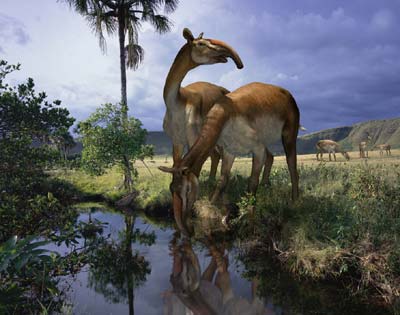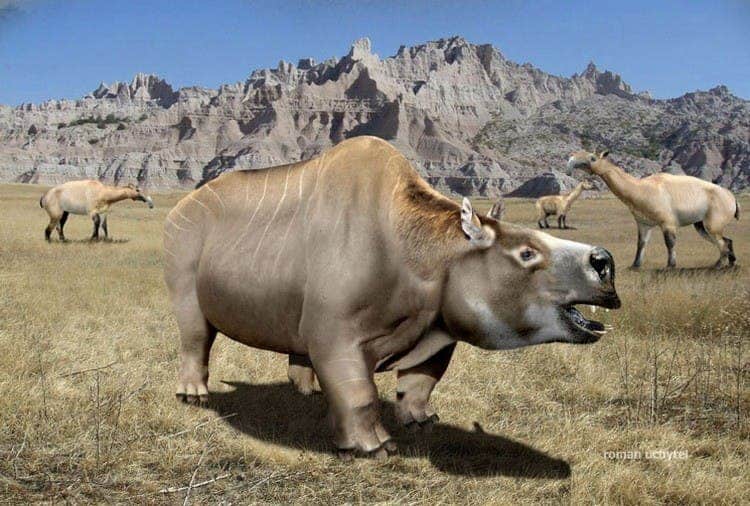While in South American during his 1830 expedition with the HMS Beagle, Charles Darwin came across the fossils of two peculiar hoofed species which he was unable to classify properly. One was Macrauchenia, which looked like a camel with the head of an ant eater, and the other was Toxodon which had the body of rhino, the head of a hippo and the teeth of a rodent. So, was the Macrauchenia related to the camel or the ant eater? Who was Toxodon’s closet cousin, the hippo or the rhino? Darwin was puzzled and to no avail concluded these were “perhaps one of the strangest animals ever discovered”. But Darwin didn’t have the tools we have today. Now, using a ground breaking technique researchers have sequenced the collagen of a myriad of South American mammals, including Darwin’s ‘strangest animals’ and finally found their real taxonomy.

The two beasts are among 250 mammals that make up a family known as the South American ungulates, which lived for 60 million years on the continent and vanished only 12,000 year ago. Studying Macrauchenia and Toxodon has been difficult because: 1) few and disperse fossil fragments and 2) because researchers have never been able to isolate proper DNA samples. These simply get too damaged because of the wet climate and interfere with conventional genetic screening that is typically used to relate ancient, extinct species with another and uncover their ancestry. Here’s where collagen comes in, though – the fibrous protein that binds cells together into organs and tissues. It can last for at least 10 times as long as DNA and be used to build a collagen family tree.

A team made up of researchers at the Natural History Museum in London and University of York, UK extracted, then sequenced collagen from 48 fossils from the remains of Darwin’s animals collected from Argentina and Uruguay. Previously, the South American ungulates were suggested to have belonged to the group Afrotheria, along with elephants and manatees. The protein sequencing, however, clearly shows that both animals belong to Perissodactyla, a group that includes horses, tapirs and rhinos. The paper appeared in the journal Nature.
So, finally Darwin’s puzzle has been solved, but in doing so the researchers have unlocked a tool that could prove to be a lot more useful. The oldest DNA comes from an 800,000 years old ice core. Collagen can survive for at least four millions years, and in cold conditions maybe even 20 million years. With this in mind, the technique employed in this study could be used study other extinct groups where DNA is not an option, like is the case of dwarf elephants and enormous rodents of the Indonesian island of Flores, or Australia’s giant lizards and kangaroos.



